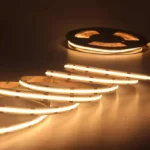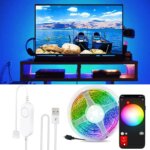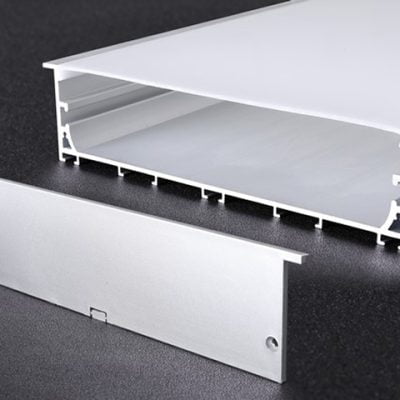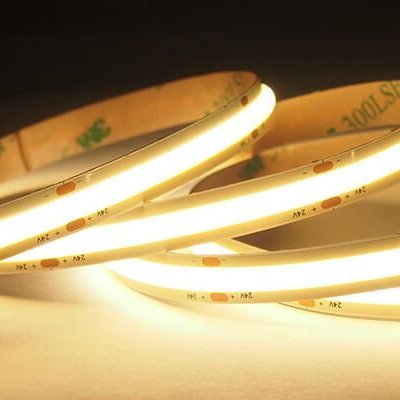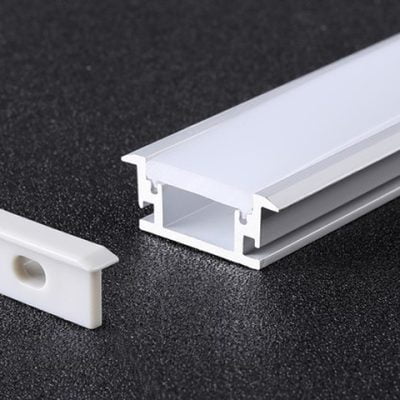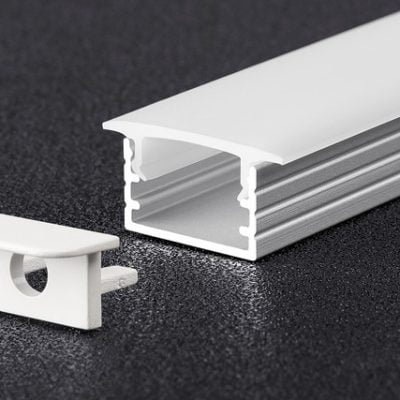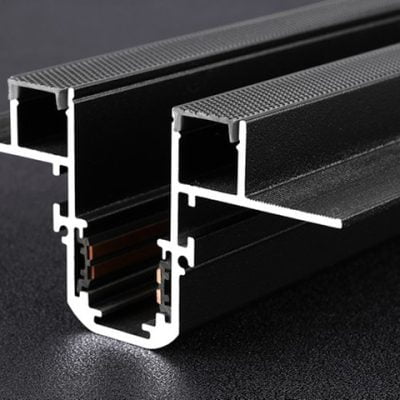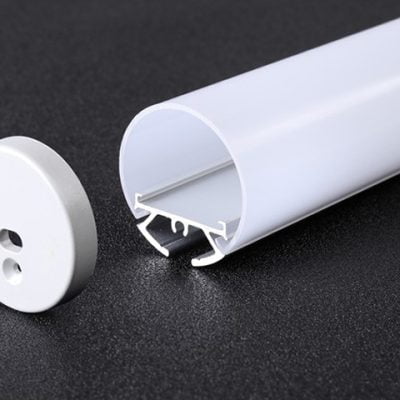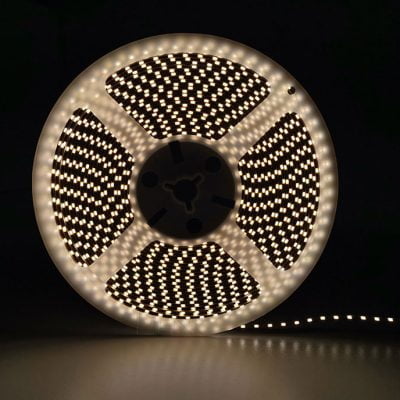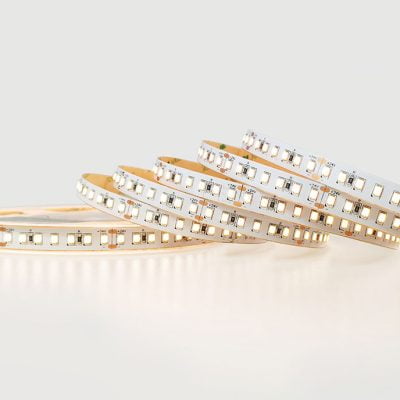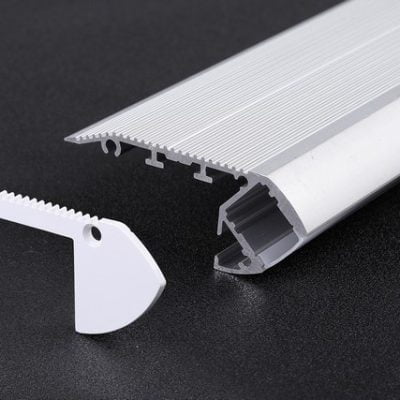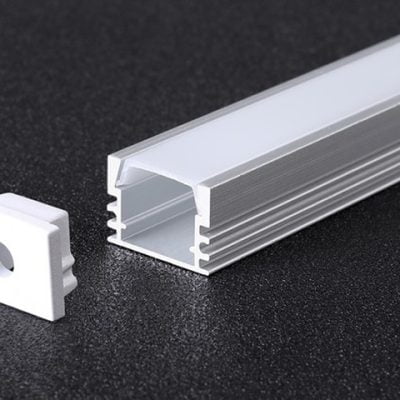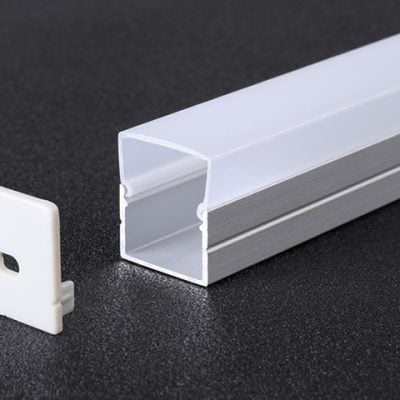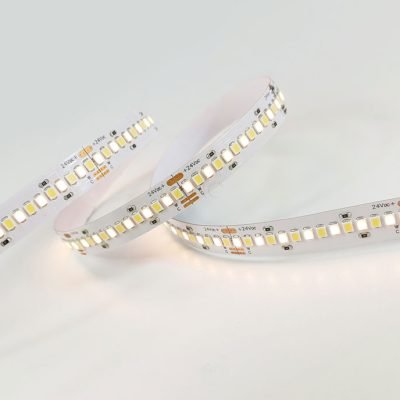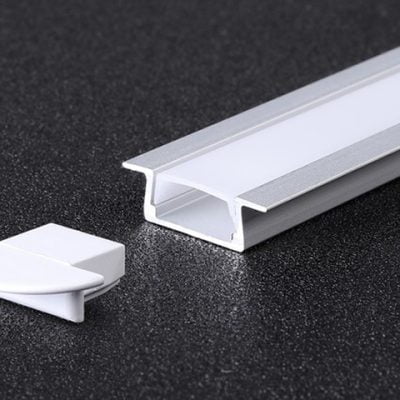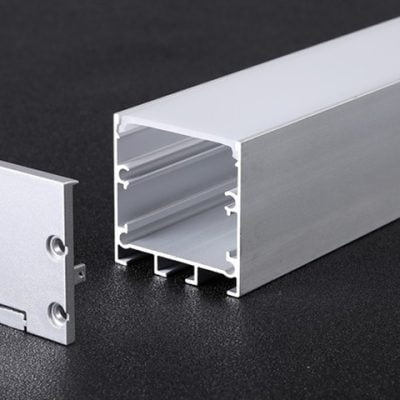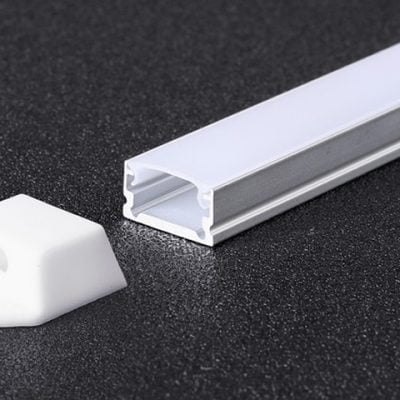
Choosing the right LED strip light can transform your living space, adding both functionality and ambiance. As a professional LED strip light manufacturer from China, we at Lightstec understand the importance of selecting high-quality, smart home-compatible lighting solutions. Whether you're looking for accent lighting in your bedroom or waterproof options for outdoor use, this guide will walk you through the essential steps to choose the perfect LED strip light.
LED strip lights have become increasingly popular in smart homes due to their versatility, energy efficiency, and ability to create stunning visual effects. From creating a cozy atmosphere in your bedroom to adding a modern touch to your ceiling, LED strips offer endless possibilities for home decoration and lighting.
Before we dive into the specifics, it's important to note that not all LED strip lights are created equal. As a leading China LED strip light supplier, we at Lightstec pride ourselves on delivering top-quality products that meet the highest standards of performance and durability.
※ Fact Check: High-quality LED strip lights can last up to 50,000 hours, which is equivalent to over 5 years of continuous use.
※ Fact Check: LED strip lights use up to 75% less energy than traditional incandescent lighting, making them an eco-friendly choice for smart homes.
Table of Contents
- Determine Your Lighting Needs
- Consider Color Temperature and Brightness
- Choose the Right IP Rating for Your Environment
- Smart Home Compatibility and Control Options
- Quality and Durability Considerations
How to Determine Your Lighting Needs?
The first step in choosing the perfect LED strip light is to assess your lighting needs. Are you looking for accent lighting to create a cozy atmosphere in your bedroom, or do you need bright task lighting for your kitchen countertops?
Understanding your specific requirements will help you narrow down your options and choose the most suitable LED strip light for your space.
When determining your lighting needs, consider factors such as the room's size, the desired ambiance, and the primary purpose of the lighting. For example, LED strip lights for bedrooms might focus more on creating a relaxing atmosphere, while strips for a home office might prioritize brightness and color accuracy.

To help you visualize different lighting scenarios, consider the following table:
| Room Type | Lighting Purpose | Recommended LED Strip Features |
|---|---|---|
| Bedroom | Ambient lighting | Dimmable, warm CCT options |
| Kitchen | Task lighting | High brightness, cool CCT |
| Living Room | Accent lighting | RGB color-changing, smart control |
| Bathroom | Functional lighting | Waterproof, high CRI |
| Home Office | Productive lighting | Adjustable CCT, glare-free |
※ Fact Check: The human eye perceives different color temperatures as more or less relaxing. Warm light (2700K-3000K) is often preferred for bedrooms, while cooler light (4000K-6500K) can enhance productivity in work areas.
※ Fact Check: LED strip lights with high Color Rendering Index (CRI) of 90+ can accurately display colors, making them ideal for areas where color accuracy is important, such as bathrooms or art display areas.
What Role Does Color Temperature and Brightness Play in LED Strip Selection?
Color temperature and brightness are crucial factors that significantly impact the mood and functionality of your lighting. Understanding these concepts will help you choose LED strip lights that perfectly complement your space and meet your lighting needs.
Color temperature, measured in Kelvin (K), determines whether the light appears warm (yellowish) or cool (bluish). For a cozy, relaxing atmosphere in bedrooms or living rooms, opt for warm white LEDs (2700K-3000K). For task-oriented areas like kitchens or home offices, consider cool white LEDs (4000K-6500K) that promote alertness and productivity.
Brightness, measured in lumens, determines how much light the LED strip emits. The right brightness level depends on the room's size and the lighting purpose. For accent lighting, you might want lower brightness levels, while task lighting requires higher brightness.
[sub-heading featured image]
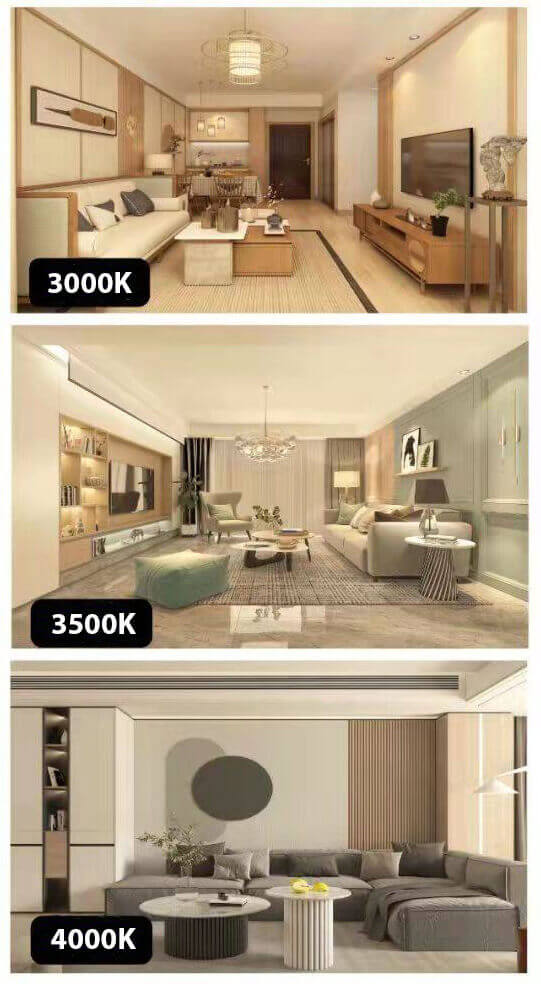
Here's a table to help you understand brightness levels:
| Brightness Level | Lumens per Foot | Suitable Applications |
|---|---|---|
| Niedrig | 100-250 | Ambient lighting, TV backlighting |
| Medium | 250-500 | Under-cabinet lighting, cove lighting |
| Hoch | 500-1000+ | Task lighting, primary room illumination |
※ Fact Check: Some advanced LED strip lights offer tunable white light, allowing you to adjust the color temperature from warm to cool throughout the day, mimicking natural daylight patterns and supporting your circadian rhythm.
※ Fact Check: The brightness of LED strips can be affected by factors such as the density of LEDs per meter and the quality of the LED chips used. Higher-quality LED strips often provide more consistent and efficient lighting.
Why is the IP Rating Important When Choosing LED Strip Lights?
The IP (Ingress Protection) rating is a crucial factor to consider when selecting LED strip lights, especially for areas exposed to moisture or outdoor environments. This rating indicates the level of protection against dust and water ingress, ensuring the longevity and safety of your lighting installation.
Understanding IP ratings is essential for choosing waterproof LED strip lights that can withstand various environmental conditions. The rating consists of two digits: the first indicates protection against solid objects, and the second against liquids.
For indoor use in dry areas, a standard non-waterproof LED strip (IP20) may suffice. However, for kitchens, bathrooms, or outdoor installations, you'll need higher IP ratings to protect against moisture and water exposure.
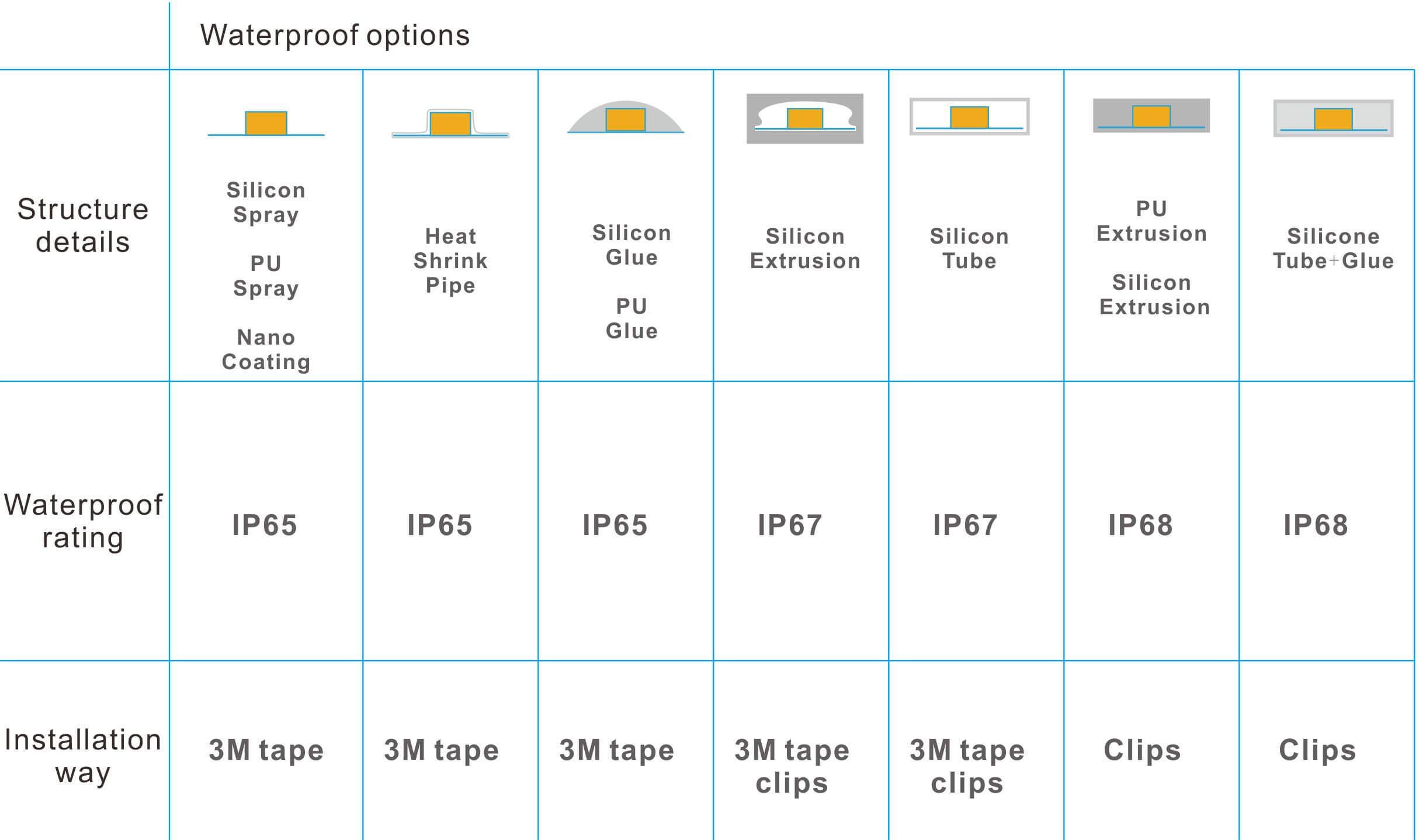
Here's a quick reference table for common IP ratings:
| IP Rating | Protection Level | Suitable Locations |
|---|---|---|
| IP20 | No water protection | Dry indoor areas |
| IP44 | Splash-resistant | Bathrooms, covered patios |
| IP65 | Water-resistant | Kitchens, outdoor under cover |
| IP67 | Waterproof | Outdoor, temporary submersion |
| IP68 | Fully waterproof | Underwater applications |
※ Fact Check: LED strip lights with an IP65 rating or higher can withstand direct water spray, making them suitable for outdoor use in most weather conditions.
※ Fact Check: While higher IP ratings offer better protection, they may also affect the flexibility and ease of installation of the LED strip. Consider the balance between protection needs and installation requirements when making your choice.
How to Ensure Smart Home Compatibility and Control Options?
In today's connected world, smart home compatibility is a key consideration when choosing LED strip lights. The ability to control your lighting through voice commands, smartphone apps, or home automation systems adds convenience and enhances the overall smart home experience.
When selecting LED strip lights for your smart home, look for options that support popular protocols like Wi-Fi, Bluetooth, Zigbee, or Z-Wave. These technologies allow seamless integration with smart home hubs and voice assistants such as Amazon Alexa, Google Home, or Apple HomeKit.
Advanced control options can include features like:
- Color changing and dimming capabilities
- Scheduling and timer functions
- Music synchronization
- Custom scene creation
[sub-heading featured image]
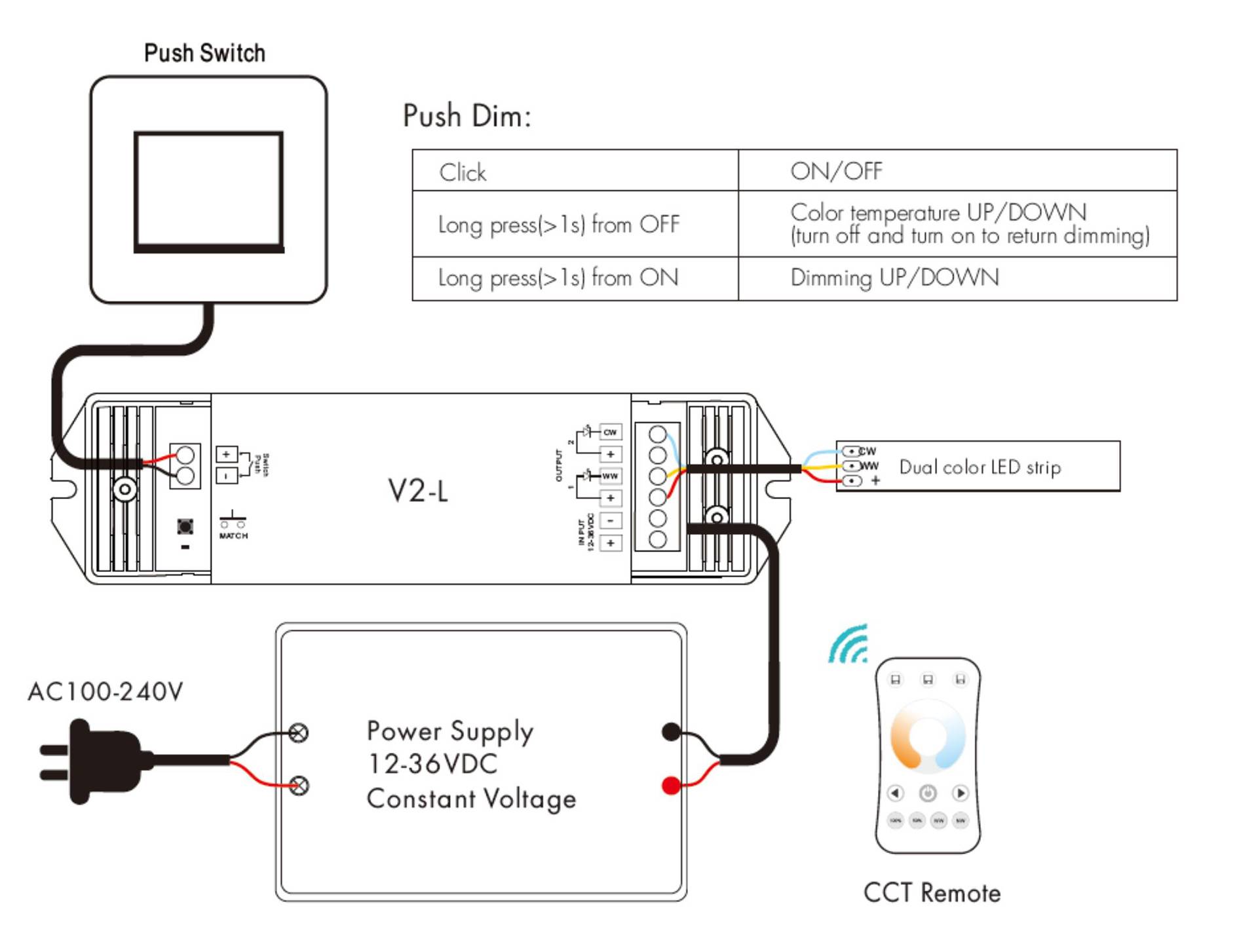
Consider the following comparison of smart control features:
| Besonderheit | Basic LED Strips | Smart LED Strips |
|---|---|---|
| On/Off Control | Manual switch | App, voice, automation |
| Dimming | Limited or none | Full range, precise control |
| Color Changing | Fixed colors | Millions of colors, dynamic effects |
| Scheduling | Not available | Customizable schedules |
| Integration | Standalone | Works with other smart devices |
※ Fact Check: Some advanced LED strip lights can be controlled via Wi-Fi without the need for a separate hub, simplifying the setup process and reducing overall system cost.
※ Fact Check: LED strip lights with individual addressable LEDs (like WS2812B) offer the most advanced control options, allowing for pixel-level color control and complex lighting effects.
Fazit
Choosing the right LED strip light for your smart home involves considering various factors, from your specific lighting needs to technical specifications like color temperature, brightness, and IP rating. By understanding these aspects and how they relate to your space and requirements, you can select LED strip lights that not only illuminate your home beautifully but also integrate seamlessly with your smart home ecosystem.
Remember, as a professional LED strip light manufacturer, Lightstec offers a wide range of high-quality options to suit every need. Whether you're looking for accent lighting in your bedroom, waterproof solutions for outdoor spaces, or smart-enabled strips for whole-home control, we have the perfect product for you.
By following this guide and considering your unique requirements, you'll be well-equipped to make an informed decision and transform your living space with the perfect LED strip lights.
Q&A
-
Q: How long do LED strip lights typically last?
A: High-quality LED strip lights can last up to 50,000 hours or more, which is equivalent to over 5 years of continuous use. However, the actual lifespan can vary depending on factors such as usage patterns, environmental conditions, and the quality of the LEDs and components used.
-
Q: Can I install LED strip lights myself, or do I need a professional?
A: Many LED strip lights are designed for easy DIY installation. However, for complex setups, outdoor installations, or if you're not comfortable with electrical work, it's best to consult a professional electrician to ensure safe and proper installation.
-
Q: Are LED strip lights energy-efficient?
A: Yes, LED strip lights are highly energy-efficient. They use up to 75% less energy than traditional incandescent lighting, which can lead to significant savings on your electricity bill over time.
-
Q: Can I cut LED strip lights to fit my space?
A: Most LED strip lights can be cut to length, but only at designated cutting points marked on the strip. Always check the manufacturer's instructions before cutting to ensure you don't damage
People Also Care about These Questions
Herstellungsprozess von LED-Lichtbändern
Die Produktion von LED-Leuchten erfordert hohe Präzision, aber viele Hersteller stellen ihre Leuchten auf einfachen Montagelinien her. Wir regulieren und überwachen alle Verarbeitungsschritte in unserem Fertigungssystem streng. Wir verfügen auch über eine vollständige Ausrüstung für die Produktion und Qualitätskontrolle. Wir beschäftigen erfahrene Ingenieure, die auch Werksleiter sind, um eine strenge Qualitätskontrolle für jeden einzelnen LED-Streifen zu gewährleisten.
Wir hoffen, dass dieser Beitrag Ihr Verständnis für die LED-Beleuchtungsindustrie erweitert und es Ihnen ermöglicht, die Produktlinie weiterzuentwickeln und zu erkunden.

Schritt 1. LED-Streifenlichtmaterial IQC
Im Werk angekommene Materialien, unabhängig von Leiterplatte, LED, IC, Widerstand, Aluminiumprofil, Kabel, müssen einer QC-Prüfung unterzogen werden. Alle Artikel müssen die Anforderungen erfüllen. Die Qualitätskontrolle ist das erste, was wir tun müssen, wenn alle Materialien ankommen. Wir müssen sie prüfen, ob sie qualifiziert sind oder nicht --- es kann jedoch immer noch einige fehlerhafte Produkte geben, die den gesamten Produktionsprozess durchlaufen haben --- Material-, Verarbeitungs- oder Versandfehler.

Schritt 2. Prüfung der LED-Farbtemperatur
Jetzt müssen Sie bei allen neuen LED-Chips die Farbtemperatur der LEDs testen. Die Helligkeit der gleichen Farbe ist nicht immer gleich. Auch der Farbwiedergabeindex ist ein Thema, auf das Sie beim Kunden achten müssen.
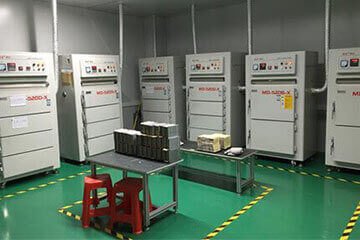
Schritt 3. LED-Trockenprozess
Normalerweise folgt auf diesen Prozess der SMT-Prozess. LED muss getrocknet werden, bevor sie SMT verarbeitet. Die Trocknungstemperatur beträgt nicht weniger als 65℃ in 8 Stunden.
Schritt 4. LED-Streifenlicht SMT-Prozess
Der SMT-Prozess für LED-Streifenlichter wird häufig in modernen Beleuchtungseinheiten eingesetzt. Komisch ist, dass SMT für Surface Mount Technology steht, aber die Technologie zur Herstellung der LED heißt nicht nur Mount Surface, sondern beinhaltet auch eine automatisierte Hochgeschwindigkeitsmaschine. Viele Menschen missverstehen dies.

Schritt 5. LED-Streifenlicht-Reflow-Lötprozess
Reflow-Löttechnologieprozess nach SMT, den Komponenten und der Leiterplatte unter Verwendung der Lötpaste. Die Leiterplatte aus der Reflow-Lötmaschine auf eine bestimmte Temperatur bringen. Die Lötpaste in die flüssige Konsistenz geschmolzen und dann mit verschiedenen Komponenten verbunden.

Schritt 6. Inspektionsprozess für LED-Streifen
Wir haben einen 100%-Test, um sicherzustellen, dass die Produkte keine physischen Schäden aufweisen. Die Sichtprüfung stellt sicher, dass es keine Farbverschiebung der LEDs gibt und ob irgendwelche Komponenten in Lötbrücken falsch ausgerichtet sind.
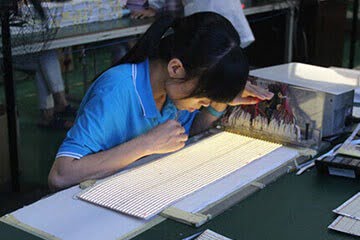
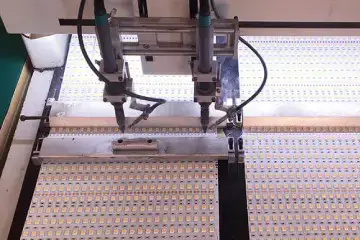
Schritt 7. Lötprozess für LED-Streifen
Einige kleine Leiterplatten mit dem bleifreien Lötprozess mit Nullwinkel. Nach der Inspektion durchläuft das LED-Band eine Lötmaschine, die 0,5 m langes Band mit 5 m langen Streifen verbindet.

Schritt 8. Reinigen der LED-Leiterplatte
Die Leiterplattenoberfläche für den LED-Streifen muss mit einem Lötkolben gereinigt werden. Das erste, was zu tun ist, ist noch Löten. Löten Sie den IC kann verwendet werden, um Oxidation während des Lötvorgangs zu verhindern, und schneiden Sie dann den überschüssigen Anschlussdraht in eine runde Zahnpastatrommel wie Oxidation ab. Nachdem dies alles erledigt ist, können wir mit der Reinigung fortfahren.
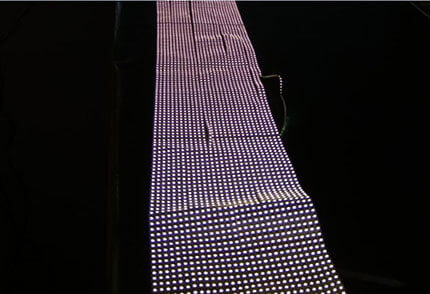
Schritt 9. Alterungsprozess der LED-Streifen
Tatsächlich benötigen alle LED-Produkte einen Beleuchtungstest für 8 Stunden, um sicherzustellen, dass jede LED in gutem Zustand läuft. Und wir können beim Beleuchtungstest die Farben messen, ob die LEDs die richtige Farbtemperatur haben und ob der Treiber gut funktioniert. Daher ist dies sehr wichtig für den Hersteller, um sicherzustellen, dass alle LEDs in Ordnung sind.
Schritt 10. Wasserdichter LED-Streifen
LED-Streifen sind wasserdicht und auch rostbeständig, wodurch sie für eine Reihe von Anwendungen innerhalb und außerhalb des Hauses geeignet sind. Die Auswahl des Wasserdichtigkeitsprozesses für LED-Streifen ist ein wichtiger Schritt im Herstellungsprozess. Auf dem Markt sind hochwertige IP65-Silikonschläuche wasserdicht und IP67-Silikonspritzguss erhältlich.
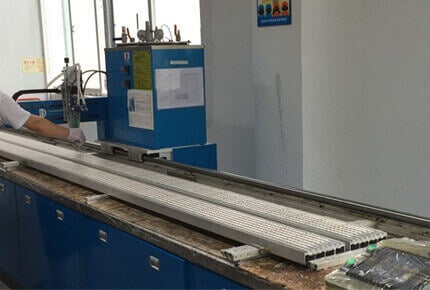
Schritt 11. LED-Streifenlicht fügen 3M-Bandprozess hinzu
Das 3M-Klebeband auf der Rückseite des Streifens bietet Verbrauchern Komfort und Leichtigkeit bei der Installation von LED-Streifen.
Wir verwenden 3M 9080 für alle nicht wasserdichten und wasserdichten Streifen, einige Kunden fordern andere 3M-Klebstoffe mit besserer Klebrigkeit oder besserer Wärmeleitfähigkeit, die ebenfalls erhältlich sind.
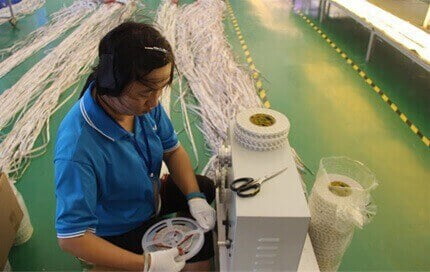
Schritt 12. Endkontrolle der LED-Streifen
Nachdem das gesamte LED-Streifenpaket unsere Verarbeitung durchlaufen hat, führt die Qualitätskontrollabteilung von LED Starlight eine Endkontrolle unserer Produkte durch. Wir achten nicht nur darauf, dass sie die gleiche Lichtfarbe haben und frei von Mängeln sind, sondern auch, dass das Aussehen gut genug ist, um die Anforderungen der Kunden zu erfüllen.
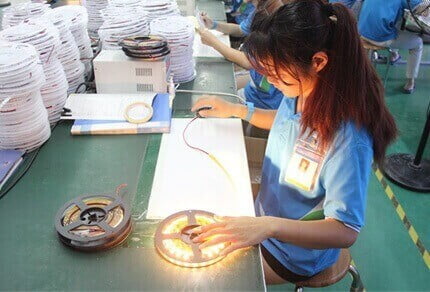
-
Profil für architektonische Beleuchtung (30)
-
COB-LED-Streifen (4)
-
Trockenbau-LED-Kanal (21)
-
Boden-LED-Kanal (7)
-
Hängende Profilleuchte (29)
-
LED-Aluminiumprofil (178)
-
LED-Eckprofil (4)
-
LED Sockelleiste (10)
-
Magnetische LED-Aluminiumprofile (6)
-
Eingelassener LED-Kanal (24)
-
RGBW-Farbwechsel-LED-Streifen (8)
-
Rundes LED-Profil (2)
-
LED-Streifen mit seitlicher Ansicht (1)
-
Einfarbige LED-Streifen (6)
-
LED-Streifenprofil für Treppen (2)
-
LED-Profil zur Oberflächenmontage (17)
-
Dreiseitig beleuchtetes Profil (3)
-
Abstimmbare weiße LED-Streifen (3)
-
Beleuchtungskanal unter dem Schrank (18)
-
An der Wand befestigtes lineares Licht (11)
-
Profile für Garderobengeländer (1)
-
Wasserdichter LED-Kanal (4)

